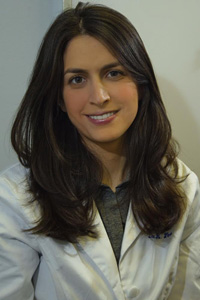I remember when I first learned that acupuncturists would administer needles, or ear seeds, in a patient’s outer ear in order to treat them. I was in graduate school and we were required to take an entire semester’s worth of classes learning about the methods and practice behind auricular (ear) acupuncture. When I first began I thought to myself, how complex can it be, it is just an ear? What I quickly began to discover after my first class was that my initial thought about the importance of the ear were about to rapidly change. It was during that first class when I was taught about the word homunculus. The word Homunculus means a representation of human body through a small figure. Our ears are an example of something being homunculus. If you look at them closely, you will see an upside down fetus. The lobe of the ear represents the head of a fetus. If we think of the ear as a map of our body, then we can start to understand that doing acupuncture on our ears can be extremely powerful.

The ear is broken up into different sections. As stated before, the lobe of the ear represents the head of a fetus. When acupuncture needles are administered into the lobe, an acupuncturist is treating issues such as jaw pain, eye pain, toothaches, as well as other disorder that are related to either the head or the face. Moving up the ear, picture the anti-helix as a spine. The beginning of the anti-helix is the upper back, and as you follow the anti-helix around, it goes to the lower back. The anti-helix leads into the triangular fossa which holds Shen Men, the point for relaxation.
Below the triangular fossa is the cymba concha, which holds all the points that represent the different organs in our bodies. An acupuncturist will place needles in these points to help detoxify an organ in the case of addiction, or strengthen the organ if it seems to be weak. The helix crus, which is below the cymba concha, houses Point 0. Point 0 is a repeat button. In our lives, it is common to have bad days or bad weeks so Point 0 helps put the past behind us and restart.
There are other sections of the ear that help our patients with different ailments such as hypertension, insomnia, and headaches. Many acupuncturists will use different points for different protocols to help issues such as addiction, infertility, and pain, as well as so much more. Battlefield acupuncture is a specific protocol used by soldiers who are hurt during battle. The 5 specific points are Omega 2, Shen Men, Thalamus, Cingulate, and Gyrus. They are located from top to the bottom along the ear, and can help anyone who is suffering from pain.
To prolong the effects of a treatment, an acupuncturist may give their patient ear seeds. Ear seeds are placed in the same spots as needles. Ear seeds can be in the form of vaccaria seeds, which helps to drain an organ in the case of addiction. Gold seeds are used to help tonify the body, while silver seeds can help prolong the effects of a treatment. Usually a patient will keep their ear seeds in for 3 to 5 days, unless they feel any discomfort, in which case a patient should take out the ear seeds immediately.
Auricular acupuncture is extremely effective because it covers the entire body. It is also close to the brain and can send signals to the brain to help heal the body. It is common for many patients to be scared or nervous when receiving needles in their ears since they feel as though it will be a similar experience to getting your ears pierced. However, the acupuncturist is not putting the needle that deep into a patient’s ear and if you do experience any pain, it is only for a quick second.
Looking back at my time in graduate school, I can now understand why I spent an entire semester focusing on auricular acupuncture. Yes, it seemed simple at first glance but I know now that every spot on the ear holds a key to helping ensure that each and every acupuncture treatment is more effective and lasts longer. Our ears aren’t just a tool to help us hear, they service as a representative of our bodies, and contain the ability to help heal us.
Dana Fine, L.Ac.
Editor In Chief
